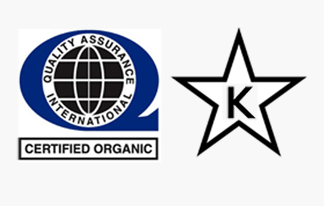Communicating Hardware and Software Content
by Christina Cyr, CEO
Do you care about data privacy in the software of your devices? Do you care about environmentally friendly materials in and material composition of your consumer electronics? What would be the best way to convey that information to you? What information format would help you? This article will discuss some options.
I believe the systems within our society have failed in educating consumers about environmentally friendly materials and data privacy. Let’s tackle the topic of communicating material composition first. Icons, such those which are now used to identify a plethora of plastic types, are frequently overwhelming, difficult to keep track of, and in the end, symbols without meaning to the general public. Icons seem to be most useful when there is only one category (like “K” for kosher, or “QAI” for the Quality Assurance International Organic Certification). But when used in a group (as above), icons can be difficult to distinguish. Therefore, I believe that at the inception of concepts, such as material composition, words/terminology may be found to be more vital than symbols.
Image Credit: Star-K
In the example of organic food, our society needed serious education about the multitude and complexity of benefits that higher-priced organic food could have in regards to health, community, environment, laws and so on, decades before the QAI Organic Certification logo was established. In contrast, I think icons designated for environmentally friendly materials are beneficial for sorting in recycling centers, but have skipped the necessary educational period for the consumer. In regards to labelling environmentally friendly materials or hardware/software content, descriptive words and phrases may prove to be more valuable at this point.
Further, tables like nutritional labels or checklists may be able to bridge the educational gap and even hold additional benefits. Take potassium for example. I can search a typical nutritional label for potassium while ignoring the rest of the items in the label. I don’t need to know all about the benefits of potassium, or even its chemical element symbol in the periodic table, in order to find out how many grams are in a serving size.
One great application of the nutritional label format was developed by open hardware advocate Jeffrey Yoo Warren, based on an idea proposed by Alicia Gibb, and can be found at the Open Source Hardware Association’s (OSHWA’s) github site. In the OSHWA's certification mark generator, the table declares licenses applying to a certified piece of open hardware. At dTOOR, we have a label like this for our first OSHWA open hardware certification for the first enclosure for The Cyrcle Phone, which is as follows.
In regards to communicating data privacy, categorical distinctions can be important. For example, maybe you don’t mind that your movements are being tracked, but you want to prevent people knowing what you buy, or vice versa. Perhaps you would like to contrast various map applications, to see what percentage of the time your movements are tracked. Here is a quick draft of what a data privacy label like that might look like.
For environmentally friendly materials, I can never remember which number indicates the plastic is plant-based. Here is the full display of the plastic resin icons.
Case in point, paper products have gone through even further struggles with having to categorize post/pre-consumer recycled content (certifications, laws).
Image credit: Always Upward
However, if there was a list which indicated the composition of elements in the product enclosure (just as a start), that would be beneficial to me because I prefer to buy products that will decompose faster than petroleum-based materials. I would probably also want to know if the content was virgin or recycled materials. But if I lived outside of the USA, what other factors would I care about (since commercial composting is not readily available outside of the USA)?
As you can see, there are a lot of factors in play when it comes to the hardware and software content of a product. Understanding these components and communicating their meaning to the general public is an important task. Doing so will lead consumers to make better informed decisions and can make a positive impact to our environment. I am hoping that in time, we would see an increase in consumer education in regards to data privacy and especially environmentally friendly materials.







